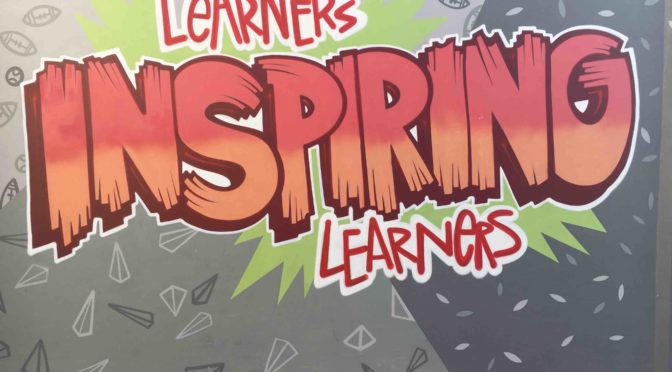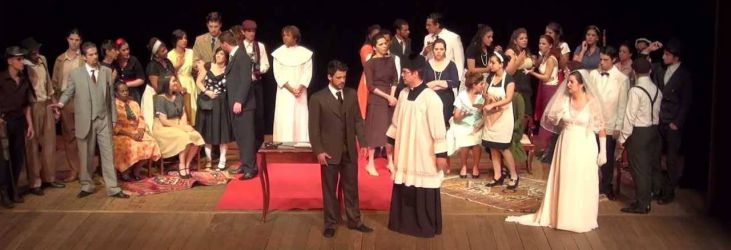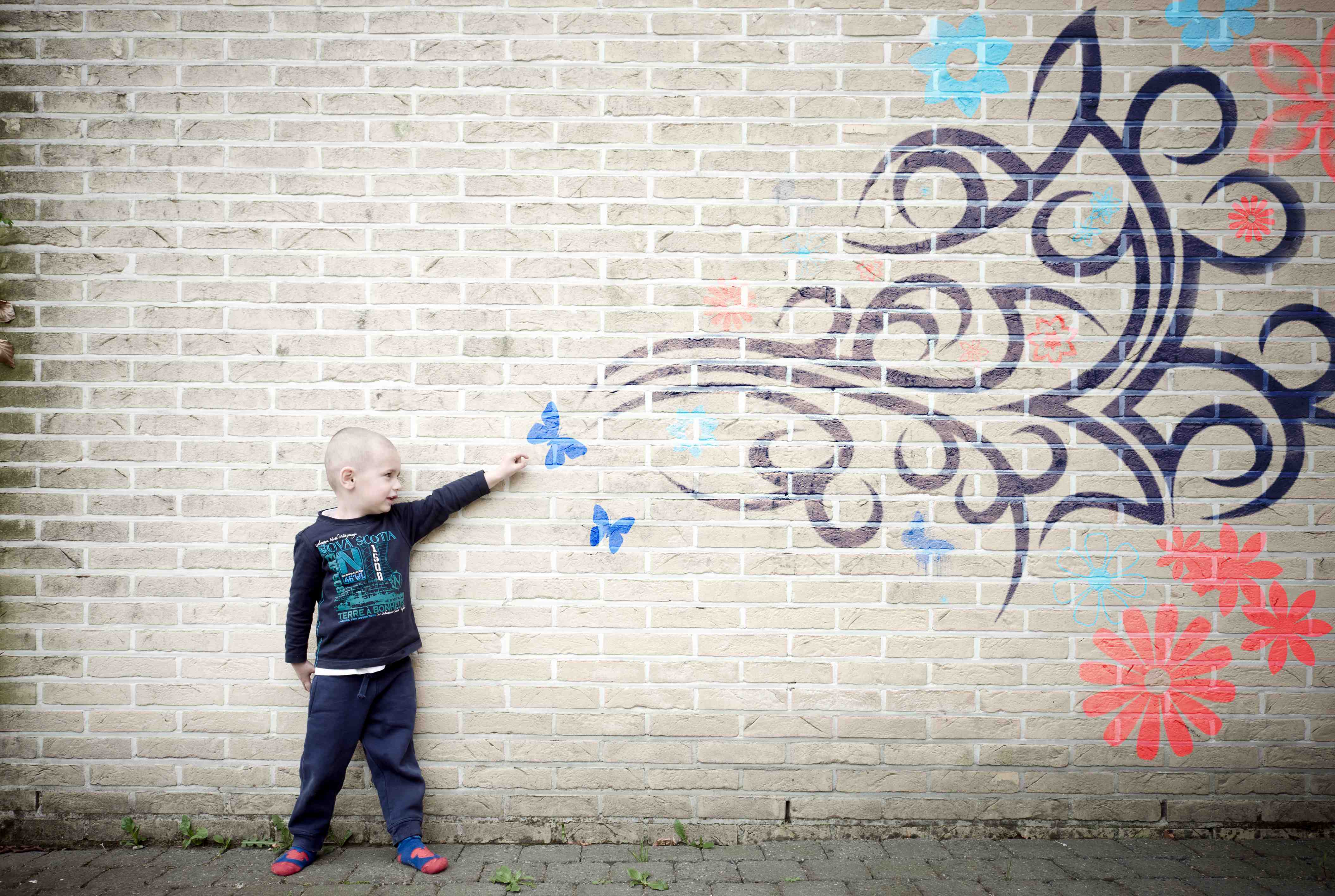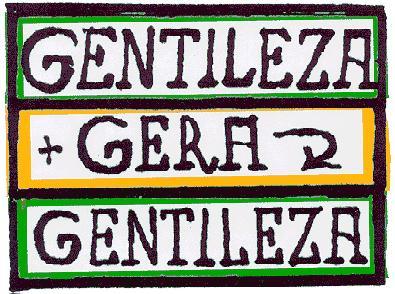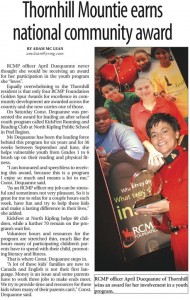“In ordinary life, we hardly realize that we receive a great deal more than we give, and that it is only with gratitude that life becomes rich.” ― Dietrich Bonhoeffer
Dear EAB Community,
It is with a heavy heart that I write this final communication in my role as Head of School. Serving EAB for the last seven years has been the honor and pleasure of a lifetime and, to that end, I cannot think of a better word than gratitude to highlight my time in Brasilia. It is difficult to summarize the seemingly countless reasons for my appreciation but will try to do so with a focus on five main areas: community, growth, families, faculty and staff, and reflections.
Community
It is without question that EAB’s greatest strength and differentiating factor is the school’s sense of community. It would be difficult to find another school that has the same esprit de corps and high level of positive energy and optimism. Faculty, staff, students, and parents regularly talk about how much they enjoy coming to the school and being part of this special community to the point that we often hear EAB referred to as a family.
The essence of any effective educational program is based on relationships. EAB’s students benefit from a deeply rooted culture that prioritizes and nurtures our community relations. It is this focus and belief in the community that has led not only to opportunities for celebrations associated with EAB’s successes, but also the coming together to provide mutual support, growth, and learning during challenging times, particularly in the face of tragic events.
It is the sense of community that has inspired a culture in which everyone is seeking to constantly improve the school’s programs and committed to being an active participant in the change process, all framed by a focus on student learning.

Growth
The emphasis on community and active participation has provided a fertile environment that embraces a continuous growth model. The hard work and dedication of faculty, staff, board members, volunteers, parents, and students have resulted in EAB’s recognition worldwide as a top tier international school and a regional leader among schools in South America. With respect to more tangible measurements, the following three areas highlight the school’s growth with respect to community (enrollment), management (finances), and student results (International Baccalaureate – IB scores).
- Enrollment has been on an upward trend for several years, which has resulted in EAB’s current capacity enrollment and associated waiting lists.
- EAB’s financial reserves have moved from essentially no reserves to a significant fund of nearly 40 million reais, which is primarily allocated to two strategic areas: (i) to ensure a contingency reserve, which is an expected best practice in international schools, to protect the school in the event of a future adversity or vicissitude, and (ii) to contribute to funding the future master facilities construction project.
- Since EAB’s first IB student cohort in 2011, we have seen the average IB subject scores improve each year with virtually every key metric rising well above the world average.
It is due to the hard work and dedication of an entire community that EAB has been able to achieve these levels of development. And, we are grateful for the opportunity to have stood “on the shoulders of giants” – EAB’s previous Heads of School who made such a significant difference in the school’s development. It is EAB’s commitment to a continuous growth model that will serve EAB well in the future as the school continues to nurture and protect its strengths while also continuing to address the areas requiring further growth and development.
Families
The heart of a school are the students and EAB’s students are exceptional! I continually marvel at their creativity, intelligence, passion, interpersonal skills, and positive spirit. College admissions representatives, guests, and teachers from other schools regularly highlight what we see every day with regards to how impressive our students are in everything they do. Thank you, parents, for choosing EAB and enrolling your outstanding children!
EAB’s parents and family members exemplify the spirit of our school’s mission – Learners Inspiring Learners – as they are true partners in the learning process. The high degree of parent involvement at events, participation in workshops, and support for the school has made a real difference in the development of our educational program and, ultimately, benefit our students.
A special recognition and thank you goes to the Parent-Teacher Organization (PTO) who has volunteered countless hours towards to the betterment of the school. In the spirit of continuous improvement, the PTO recently participated in a series of retreats in which their goal was to evolve their purpose and mission. Effective immediately, the PTO’s new title is Family School Partnership (FSP), which is more representative of EAB’s culture and spirit. FSP’s new mission and vision read as follows: Vision – Inspiring families to partner in the education of their children; Mission: Connecting EAB families with each other and the school to create a strong community of lifelong learners.
Finally, I would like to recognize EAB’s Board of Directors. I marvel at the commitment of this highly effective team and the amount of time they dedicate to the future development of the school. I can state with confidence that EAB’s Board of Directors have earned a reputation among all international schools as a board that exemplifies best practices and effective governance. On a personal note, I am particularly grateful for the Board’s support, encouragement, and trust.
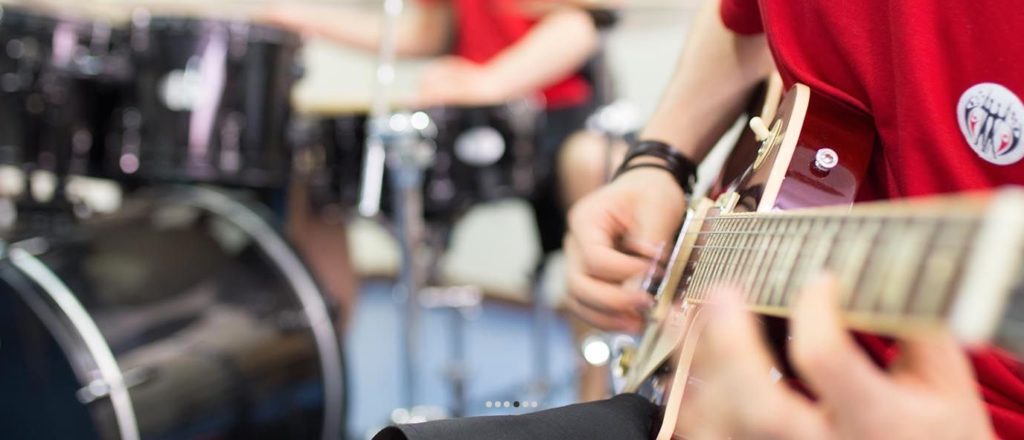
Faculty and Staff
It is the faculty and staff that make the greatest difference in determining school effectiveness. EAB is most fortunate in this aspect as the faculty and staff are an incredibly dedicated, talented, determined, and impressive group of professionals. Colleagues regularly mention the faculty and staff as a highlight of working at EAB. From the guards who know everyone’s names to the teachers who will go to remarkable lengths to personalize learning and fulfill EAB’s mission, the school’s faculty and staff are an inspiration. It has been my honor and pleasure to serve with these extraordinary professionals.
Final Reflections
Working at EAB is a special privilege. The community spirit, the family support, the impressive faculty and staff, and the talented students all motivate us to give our very best to the school. It does not feel like work, but rather more like a purpose or a calling – Learners inspiring learners to be inquisitive in life, principled in character, and bold in vision – to hopefully make a real difference.
While my focus has been on serving the EAB community to the best of my abilities, I must confess that it feels like I have received more than I have given. I am grateful to have learned so much from this community and to have worked with such inspirational people. I am grateful for all the support and kindness I have received, for the opportunity to appreciate and learn from our diverse and international population, and, of course, for the chance to live in wonderful Brazil. I am deeply grateful for the opportunity to have served as EAB’s Head of School for seven years and to be part of this special community. While the marks I may have left on the school’s program and development will inevitably fade over time, it is the relationships that will endure and the impact EAB has had on me that will last a lifetime.
While my contract as EAB’s Head of School will be completed at the end of this month and it is clear when my professional responsibilities will end, I am still not sure how to say goodbye to a community that has become more like an extended family. If it is true that we say “goodbye” to a position but not to people, then it seems best to end this note in the spirit of “until later” using two deeply meaningful Brazilian phrases: Até logo. Já estou com saudades!
Um abraço,
Barry
PS: Thank you, EAB and Brazil! Sometimes words are not sufficient so… this is our best Samba de Gafieira effort to express our gratitude to the EAB community and our appreciation of Brazilian music and culture. / Obrigado EAB e Brazil! Às vezes, as palavras não são suficientes, então … este é o nosso melhor esforço de Samba de Gafieira para expressar nossa gratidão à comunidade EAB e nossa apreciação da música e da cultura Brasileira.
PPS: Three very special EAB end-of-year / farewell videos:
Versão em português:
“Não chore porque acabou, sorria porque aconteceu.” – Dr. Seuss
Prezada Comunidade da EAB,
É com o coração apertado que eu escrevo esse último comunicado como Diretor Geral. Servir à EAB nos últimos sete anos foi a experiência de maior honra e a mais prazerosa da minha vida, portanto gratidão é a melhor palavra para destacar o meu tempo em Brasília. É difícil resumir as razões, aparentemente inúmeras, para o meu apreço, mas tentarei fazê-lo com foco em cinco áreas principais: comunidade, crescimento, famílias, professores, funcionários e reflexões.
Comunidade
Não há dúvida de que o fator diferencial e a maior força da EAB são o senso de comunidade da escola. Seria difícil encontrar outra escola com o mesmo esprit de corps, alto nível de energia positiva e otimismo. Os professores, a equipe, os alunos e os pais falam sobre o quanto eles gostam de ir à escola e fazer parte desta comunidade especial, a ponto de muitas vezes ouvir a EAB sendo comparada a uma família.
A essência de qualquer programa educacional efetivo é baseada em relacionamentos. Os alunos da EAB se beneficiam de uma cultura profundamente enraizada que prioriza e nutre nossas relações comunitárias. É esse foco e a credibilidade na comunidade que nos levaram, não só as oportunidades de celebrarmos o sucesso da EAB, mas também à união que proporciona apoio mútuo, crescimento e aprendizagem durante os tempos difíceis, principalmente nos eventos trágicos.
É o senso de comunidade que inspirou uma cultura na qual todos estão buscando melhorar constantemente os programas da escola e se comprometeram a ser um participante ativo no processo de mudança, tudo isso com foco na aprendizagem dos alunos.
Crescimento
A ênfase na participação comunitária e ativa proporcionou um ambiente fértil que engloba um modelo de crescimento contínuo. O trabalho árduo e a dedicação dos professores, funcionários, membros do conselho, voluntários, pais e estudantes resultaram no reconhecimento mundial da EAB como uma escola internacional de nível superior e líder regional entre as escolas da América do Sul. Com relação a medidas mais tangíveis, as três áreas a seguir destacam o crescimento da escola em relação à comunidade (matrícula), gestão (finanças) e resultados dos alunos (notas do Bacharelado Internacional – IB).
- As matrículas estão em ascendência há vários anos, o que fez com que a EAB atingisse a sua capacidade máxima de matrículas e nas listas de espera associadas.
- As reservas financeiras da EAB passaram de apenas reservas para um fundo significativo, que é atribuído, principalmente, a duas áreas estratégicas: (i) Assegurar uma reserva de contingência, que é uma prática esperada nas escolas internacionais para proteger a escola em caso de uma adversidade ou vicissitude futura; (ii) Contribuir para o financiamento do futuro projeto de construção e instalações.
- Desde o primeiro grupo de alunos do IB da EAB em 2011, nós verificamos que as pontuações médias das disciplinas de IB melhoraram a cada ano.
Foi devido ao trabalho árduo e dedicação de toda uma comunidade que a EAB foi capaz de alcançar esses níveis de desenvolvimento. Somos muito gratos pela oportunidade de termos nos apoiado “nos ombros de gigantes”, no último diretor geral da EAB, quem fez uma diferença tão significativa no desenvolvimento da escola. É o compromisso da EAB com um modelo de crescimento contínuo que irá servir a EAB bem no futuro, já que a escola continua a nutrir e proteger seus pontos fortes ao mesmo tempo em que continua a abordar as áreas que exigem maior crescimento e desenvolvimento.
Famílias
O coração de uma escola são os alunos e os alunos da EAB são excepcionais! Constantemente admiro-me com sua criatividade, inteligência, paixão, habilidades interpessoais e espírito positivo. Os representantes de admissões das faculdades, visitantes e professores de outras escolas destacam regularmente o que vemos todos os dias no que diz respeito ao quão impressionante são nossos alunos em tudo o que fazem. Obrigado, a vocês pais, por escolherem a EAB e matricularem seus filhos espetaculares!
Os pais e familiares da EAB exemplificam o espírito da missão da nossa escola – Aprendizes Inspirando Aprendizes- já que são verdadeiros parceiros no processo de aprendizagem. O alto grau de envolvimento dos pais em eventos, participação em oficinas e apoio à escola têm feito uma diferença real no desenvolvimento de nosso programa educacional e, por fim, beneficiam nossos alunos.
Meu reconhecimento especial e agradecimento vão para a Organização de Pais e Mestres (PTO), que ofereceu inúmeras horas para a melhoria da escola. No espírito de melhoria contínua, o PTO participou recentemente de uma série de encontros em que seu objetivo foi evoluir seu propósito e missão. Já em vigor, o novo nome do PTO é Family School Partnership (FSP), o qual representa melhor a cultura e espírito da EAB. A nova missão e visão do FSP são:
Visão – Inspirar as famílias a serem parceiras na educação de seus filhos.
Missão – Conectar as famílias da EAB e a escola para criar-se uma forte comunidade de aprendizes ao logo da vida.
Por fim, eu gostaria de reconhecer o Conselho Diretivo da EAB. Eu fico maravilhado com o compromisso desta equipe altamente eficaz e com a quantidade de tempo que eles dedicam ao desenvolvimento futuro da escola. Posso afirmar com confiança que o Conselho Diretivo da EAB ganhou uma reputação entre todas as escolas internacionais como um conselho que ilustra as melhores práticas e uma administração efetiva. A título pessoal, eu estou particularmente agradecido pelo apoio, encorajamento e confiança do Conselho.
Professores e Funcionários
São os professores e funcionários que fazem a maior diferença na determinação da eficácia da escola. A EAB é muito afortunada neste aspecto, pois os professores e funcionários são um grupo incrivelmente dedicado, talentoso, determinado e um grupo de profissionais impressionante. Colegas sempre mencionam o corpo docente e funcionários como o ponto de destaque de trabalhar na EAB. Dos guardas, que conhecem o nome de todos, até os professores que percorrem distâncias marcantes para personalizar o aprendizado e cumprir a missão da EAB, o corpo docente e funcionários são uma inspiração. Tem sido uma honra e prazer servir com esses profissionais extraordinários.
Reflexões Finais
Trabalhar na EAB é um privilégio especial. O espírito de comunidade, o apoio das famílias, o corpo docente, o grupo de funcionários notável e o os talentosos alunos, todos nos motivam a dar o nosso melhor para a escola. Não parece trabalho, mas muito mais um propósito ou chamado – Aprendizes inspirando aprendizes a serem questionadores na vida, firmes em seu caráter e com uma visão audaciosa – para quem sabe fazermos uma diferença real.
Embora o meu foco tenha sido servir a comunidade da EAB dando o melhor das minhas habilidades, devo confessar que parece que recebi mais do que eu dei. Sou grato por ter aprendido muito com essa comunidade e por ter trabalhado com pessoas tão inspiradoras. Agradeço todo apoio e gentileza que recebi, a oportunidade de apreciar e aprender com a nossa população diversificada e internacional e, claro, pela oportunidade de viver no maravilhoso Brasil. Estou profundamente grato pela oportunidade de ter servido como Diretor Geral da EAB por sete anos e fazer parte desta comunidade especial. Embora as marcas que eu possa ter deixado no programa e desenvolvimento da escola, inevitavelmente, irão desaparecer ao longo do tempo, são as relações e o impacto que a EAB teve sobre mim que irão durar por toda a vida.
Apesar do meu contrato como Diretor Geral da EAB terminar no final deste mês e deixar claro o fim das minhas responsabilidades profissionais, eu ainda não sei como dizer adeus a uma comunidade que se tornou uma extensão da minha família. Se for verdade que não dizemos “adeus” para as pessoas e sim para o cargo então é melhor terminar esta mensagem com um espírito de “até breve” usando duas frases brasileiras profundamente significativas: Até logo. Já estou com saudades!
Um abraço,
Barry
Email: dequanne@gmail.com
Blog: www.barrydequanne.com
Twitter: @dequanne
